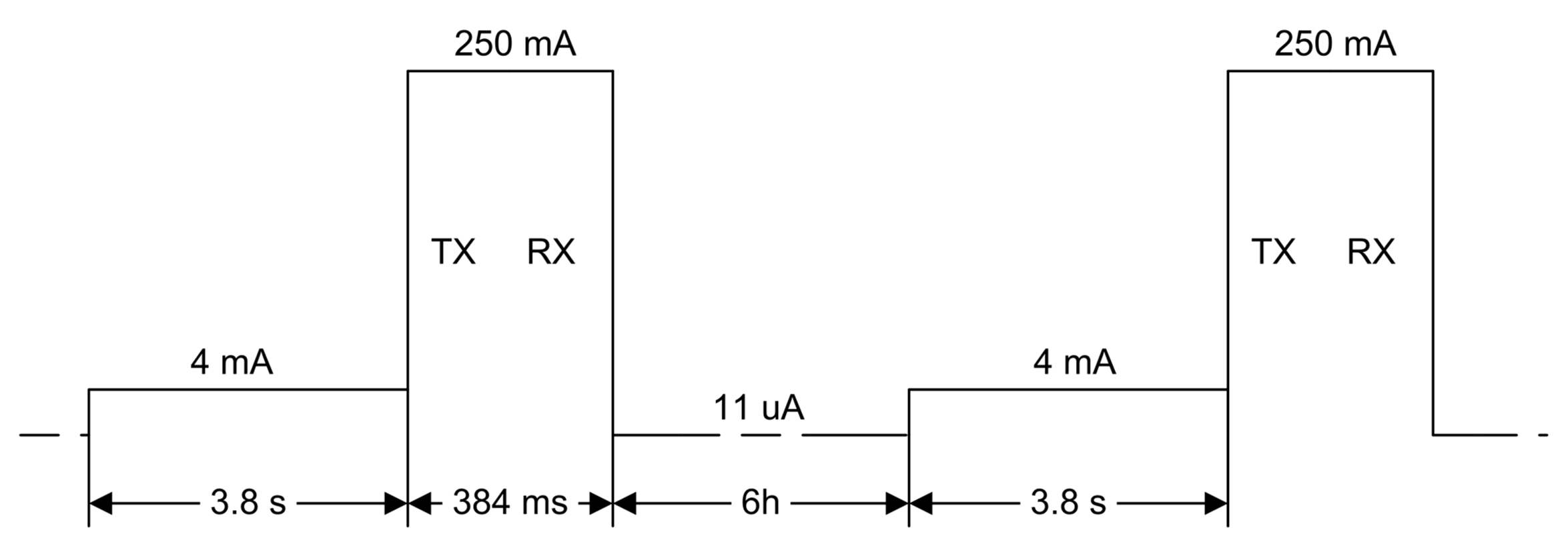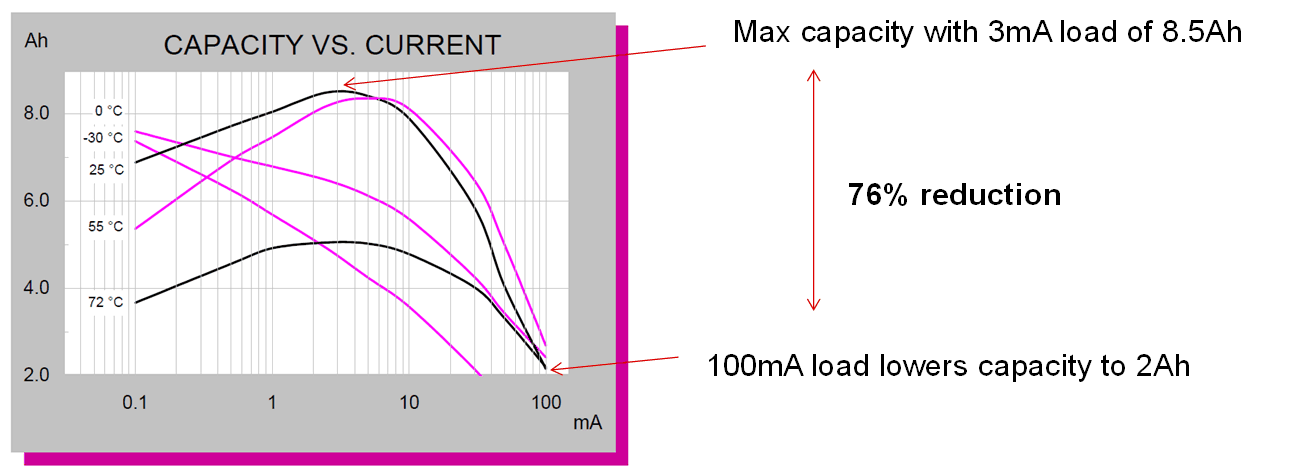SLVAF41A March 2021 – November 2021 TPS61094
1 Introduction of the Smart Meter
Smart meters, including gas and water meters need to record information such as gas or water consumption and then communicate this information to a data center. Wireless communication commonly uses methods such as, NB-IoT, LoRa and ZigBee®. Take NB-IoT as an example, the typical range of input voltage of a NB-IoT module (such as the ZTE ZM8300G module) is from 3 V to 4.2 V, with a typical voltage of 3.6 V (reference 1 ). The current consumption is similar to Figure 1-1. The typical peak current is about 250 mA.
 Figure 1-1 Typical Current Consumption of
NB-IoT
Figure 1-1 Typical Current Consumption of
NB-IoTMost smart meters are powered by LiMnO2 (lithium manganese dioxide) or LiSOCl2 batteries and need to support 10 years or more of operation. Because the voltage of a LiSOCl2 battery (about 3.6 V) is higher than a LiMnO2 battery (about 2-3 V), a LiSOCl2 battery can better support a 3-V electromagnetic valve, which why it is a more popular choice for smart meter applications. The weakness of a LiSOCl2 battery is that the maximum continuous current and pulse current capability is limited. Take an 8.5 Ah LiSOCl2 battery (Tadiran TL-4920(ER26500)) as an example, the maximum recommended continuous current is 75 mAand the maximum 1 sec. pulse capability is 200 mA (reference 2). Because of this, it is common to parallel the hybrid layer capacitor (HLC) or the supercapacitor with the LiSOCl2 battery to support the high pulse current for data transmission. Another characteristic of the LiSOCl2 battery is that the battery capacity is related to the discharging current and the working temperature as shown in Figure 1-2 (reference 2). The battery capacity is about 8.5 Ah with 3-mA discharging current at 25 °C, which is shown in the ER26500 data sheet. However, the capacity drops to 2 Ah (a 76% reduction) with a 100 mA load. It is better to control the discharge current of a LiSOCl2 battery to get a higher capacity and thus, increase the working lifetime (reference 3).
 Figure 1-2 Capacity vs. Discharging Current
and Temperature
Figure 1-2 Capacity vs. Discharging Current
and Temperature